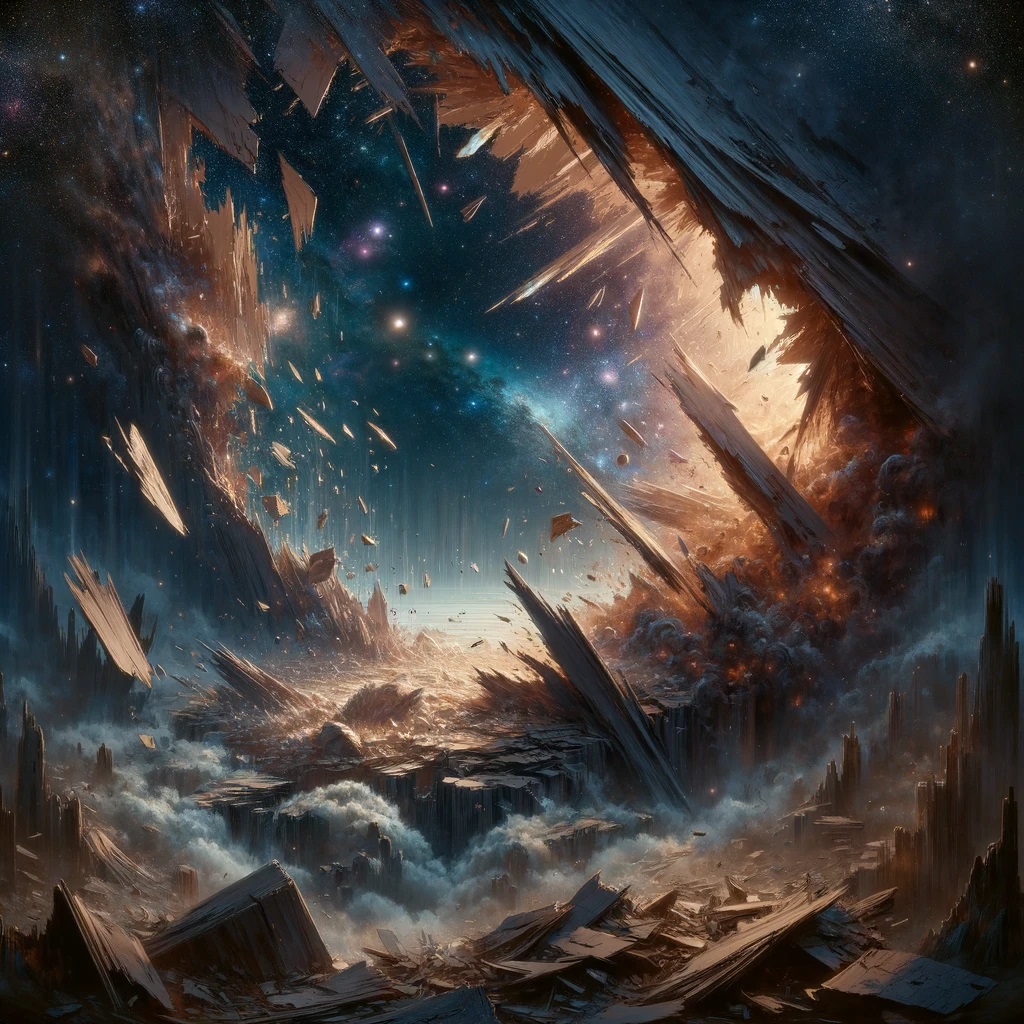The Big Rip is a catastrophe that represents the exact opposite of the Big Bang: the end of our universe. During the Big Rift, everything is irreversibly torn apart, destroying space-time.
According to these ideas, the Big Rip begins on a massive scale as galaxy clusters move apart from each other, then continues as individual galaxies, star systems, planets, and finally atoms break up. At the peak of the process, space-time simply disintegrates – hence the name of this catastrophe. How certain is all of this? like this Space.com article saysThis future seems not only terrifying, but also inevitable based on certain interpretations of current astronomical evidence.
Of course, there are other opinions, and at the heart of the controversy lies the mysterious force known as dark energy, which was discovered a quarter of a century ago and is responsible for the accelerating expansion of the universe. Dark energy is one of the biggest current mysteries in cosmology: according to one theory, dark energy is cosmologically constant, that is, a uniform force that permeates the universe and contributes to its expansion but remains unchanged over time.
According to another idea, the “phantom dark energy” or “phantom energy” hypothesis, dark energy is getting stronger over time, leading to an accelerating expansion of the universe. This acceleration can eventually exceed the speed of light, causing galaxies to move away from each other so quickly that they become permanently isolated. However, a continued increase in this force could lead to the unraveling not only of the forces holding galaxy clusters and solar systems together, but also the atomic bonds that hold matter itself together – culminating in the 'big event'. to cut”.
However, the Big Rip – perhaps needless to say then – is not a theory that physicists unanimously support, and as mentioned earlier, there is a lot of controversy around it.
Questions remain, for example, about how this cataclysmic event would affect well-established laws of physics, such as the behavior of quarks under extreme conditions. Moreover, the negative kinetic energy required for the phantom energy hypothesis contradicts the observed laws of physics, making the realism of this scenario highly questionable.
So, can't we list the very relevant arguments for phantom energy and, ultimately, the Big Rip? As in science in general, the situation is not so simple here either. Astronomical research focuses on measuring the so-called state parameter equation to quantify dark energy. This parameter compares the pressure of dark energy with its energy density. This is therefore important because, based on the above, the existence and properties of dark energy greatly affect the way the universe expands.
Observations so far are consistent with the concept of a cosmological constant, which means an equation of state parameter of -1. This means that dark energy is uniformly present in the universe and acts with a constant force, accelerating the expansion of the universe.
However, the latest data is rather interesting: it slightly favors a value slightly lower than the mentioned -1. All this suggests, based on the latest observations, that there is a slight preference for the phantom energy scenario, and thus ultimately for the Big Rip scenario. However, even this is not a convincing argument, but ultimately it is the biggest proof that the working of the universe still holds secrets unknown to us and waiting to be discovered.
Regardless, even if the Big Rip really meant the inevitable end of the universe, it wouldn't happen tomorrow. Such an event, we emphasize again: if this is true at all, it will happen in the distant future that is inconceivable to us, that is, many times a hundred billion years from now. So, we have more pressing problems than these at the moment.
(Image created by DALL-E)












































